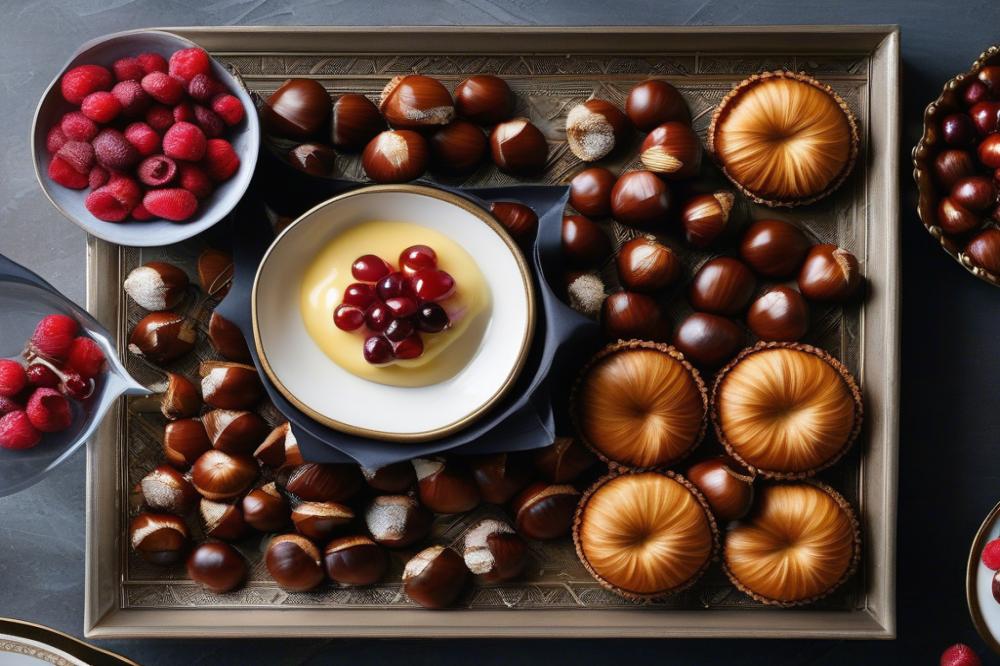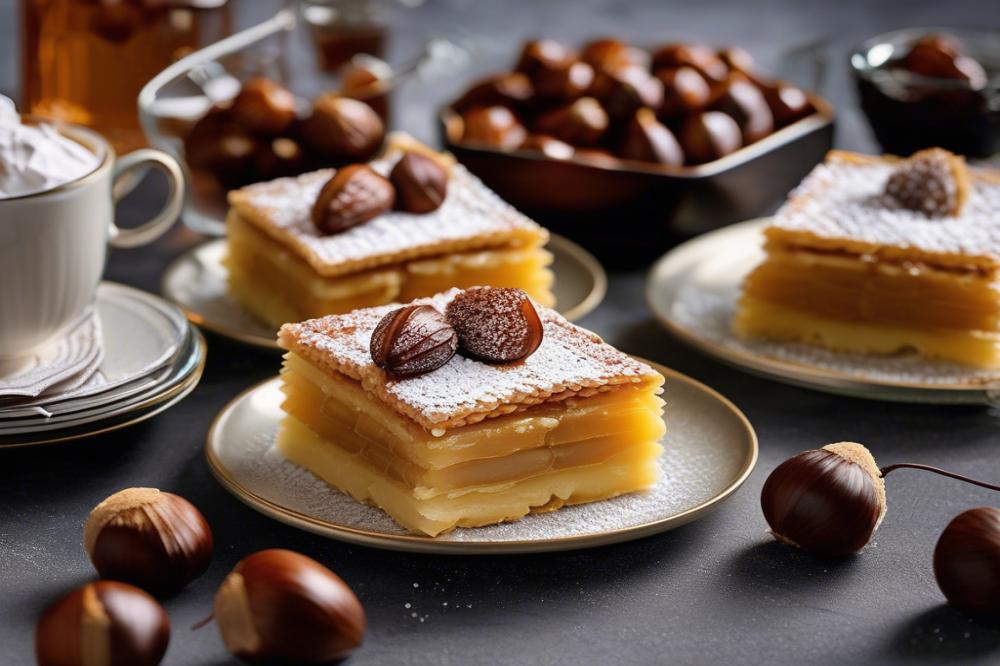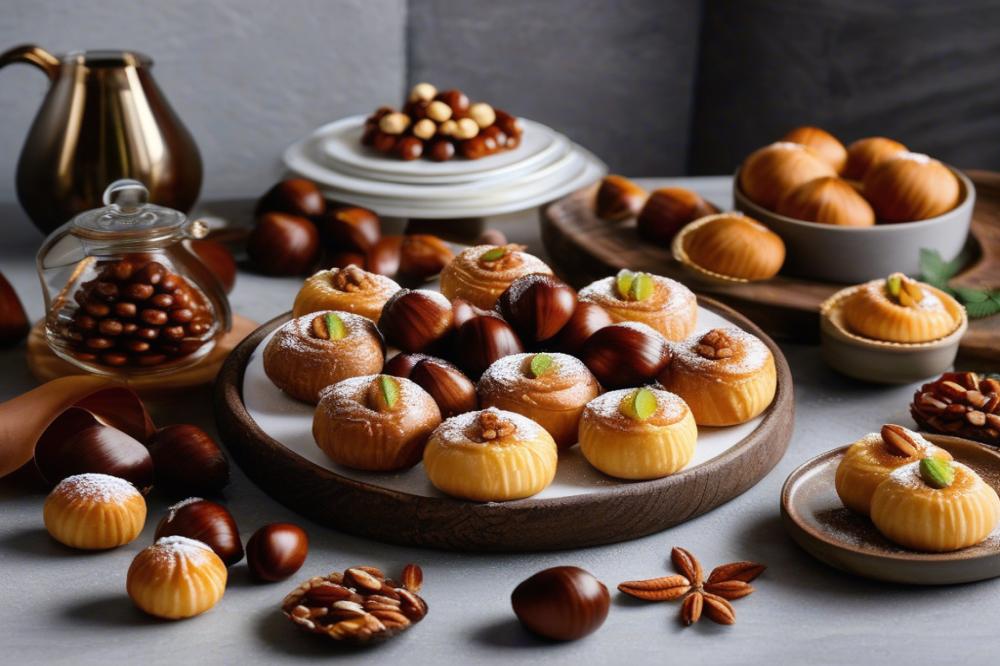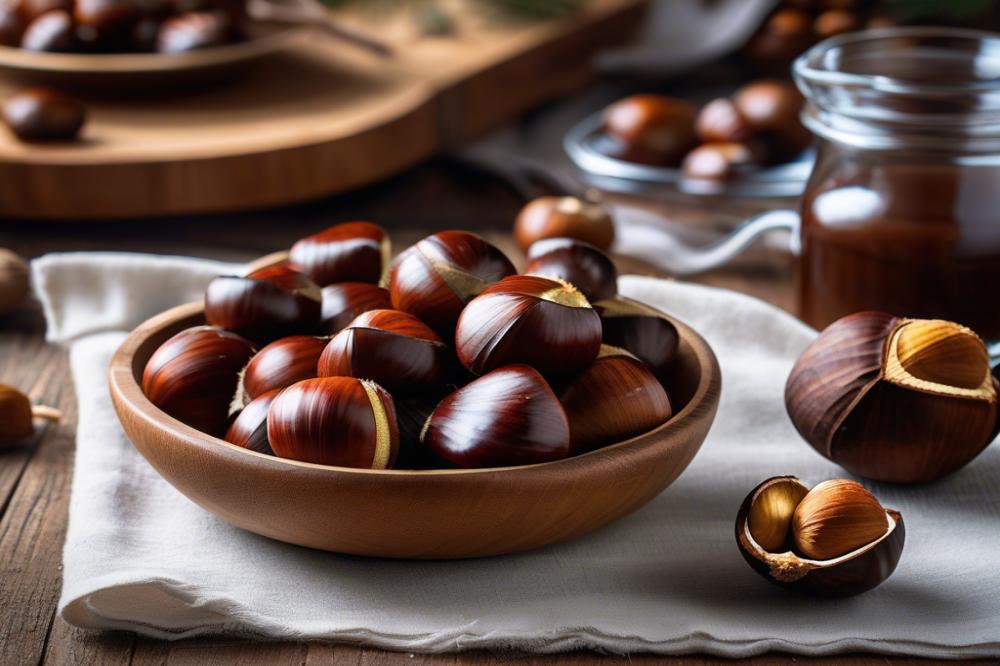Introduction
Glyko Kastana, or sweetened chestnuts, holds a special place in Greek culture. This delicious treat reflects the rich heritage of Greek cuisine and highlights the country’s fondness for sweet delights. Each bite of these sugary chestnuts tells a story of tradition and celebration, making them a beloved choice for many families across Greece.
Traditional Greek desserts serve as an important part of social gatherings and festive occasions. Many families cherish the recipes passed down through generations. These sweet treats are more than just food; they represent joy, togetherness, and shared memories. From christenings to holiday feasts, desserts play a key role in bringing people together.
Sweetened chestnuts are especially popular during the colder months. Their warm, syrupy goodness provides comfort during festivities. These delightful morsels are often featured in holiday recipes, captivating those who try them. Making Greek Sweetened Chestnuts is an enjoyable activity, perfect for family bonding in the kitchen. The process of baking them can fill your home with enticing aromas, making it a true festive experience.
What is Glyko Kastana?

Glyko Kastana are sweetened chestnuts that embody the rich culinary traditions of Greece. They are made by cooking chestnuts in a fragrant syrup, resulting in a delightful dessert. This treat showcases the expert baking skills passed down through generations. Historically, the origins of this dish can be traced back to rural villages where chestnuts grew abundantly. In those times, families would turn these hearty nuts into a sweet delicacy enjoyed during special occasions.
Culturally, they hold a significant place in Greek society. These sweet treats are often served during holidays and festive gatherings. At weddings and christenings, they symbolize prosperity and joy. People relish them not only as desserts but also as a gesture of hospitality. Sharing Glyko Kastana with guests highlights the importance of warmth and generosity in Greek culture.
When comparing them to other Greek desserts, Glyko Kastana stands out for its simple yet rich flavor. Unlike baklava, which is loaded with nuts and honey, these chestnut recipes focus on the natural sweetness of the chestnuts themselves. Other traditional Greek sweets may lean heavily on syrupy textures, but this one offers a more subtle, earthy taste. For those who appreciate baked goods, including these sweetened chestnuts in holiday recipes adds a unique touch to any dessert table.
Ingredients and Nutritional Information

To bake sweetened chestnuts in the traditional Greek style, gather the following ingredients:
- 1 kg sweet chestnuts
- 200 g sugar or a natural sweetener of your choice
- 500 ml water
- 2 tablespoons lemon juice
- 1 teaspoon cinnamon (optional)
Sweet chestnuts provide a delightful base for your dessert. Rich in complex carbohydrates, they offer energy while being low in fat. These nuts are also a good source of vitamins like B6 and C, enhancing their appeal as a healthy option among festive desserts.
Sugar is commonly used for sweetening. It adds flavor but can have a high glycemic index. If you opt for natural sweeteners like honey or agave, they may offer additional nutrients and a lower glycemic impact. Always consider your health needs when choosing sweeteners.
Water plays a crucial role in the syrup-making process. It hydrates the ingredients and helps dissolve the sugar, resulting in a smooth syrup that coats the chestnuts beautifully. Not only does it enhance the texture, but it avoids the need for overly sugary recipes.
Lemon juice adds a zest that balances the sweetness. It can elevate the flavor profile, giving the dish a refreshing note. This ingredient is also rich in vitamin C, which has various health benefits, including improved digestion and skin health.
Cinnamon, though optional, is frequently included for its warm and aromatic flavor. Known for its antioxidant properties, it can lend a comforting taste to your sweet treats and make them a bit more festive.
When considering health benefits, chestnuts stand out. They are a gluten-free option rich in fiber, aiding digestion. Their natural sweetness allows the use of less additional sugar, making them an excellent choice for holiday recipes.
If you choose to utilize natural sweeteners, they can bring antioxidants to the table, promoting overall health. Less processed forms of sugar might contribute slightly more nutrients than refined options.
In summary, baking Glyko Kastana is not just about delicious flavors. It’s also about making smart choices that benefit your health. These ingredients come together to create a traditional Greek dessert that can be enjoyed during any festive occasion.
Cooking Instructions for Glyko Kastana

Step-by-step guide to preparing the dish
Preparing Glyko Kastana involves several steps. Start by selecting fresh chestnuts. Look for ones that are firm and shiny. This will ensure they taste good. Remove any that feel soft or have blemishes. Clean them thoroughly under running water to remove dirt.
Preparation of chestnuts
Now it’s time to score the chestnuts. Use a sharp knife to make an X on the flat side of each nut. This helps in peeling them later. Once scored, soak the chestnuts in hot water for about 30 minutes. This step will soften their shells and make peeling easier. After soaking, drain and let them cool slightly. Peel them carefully, discarding both the outer shell and the inner brown skin.
Making the syrup
Next, it’s time to prepare the syrup. In a pot, combine equal parts of water and granulated sugar. You can also add a natural sweetener like honey for extra flavor. Heat the mixture over medium heat until the sugar dissolves completely. Consider adding a splash of vanilla or a pinch of cinnamon for a fragrant touch. Once you have a syrup consistency, remove it from the heat. Let it cool slightly while you get ready to bake.
Baking process
Preheat your oven to 350°F (175°C). Arrange the peeled chestnuts in a single layer in a baking dish. Pour the warm syrup over them, covering the nuts evenly. Make sure they are well-coated. Cover the dish tightly with aluminum foil to lock in moisture. Bake the chestnuts for about 30 to 40 minutes. Check them occasionally. You want them to be tender and infused with sweetness.
Cooling and serving tips
Once baked, remove the dish from the oven. Let them cool for a bit before serving. The syrup will thicken as it cools, creating a lovely glaze. Serve these sweet treats warm or at room temperature. They make a delightful addition to festive desserts. Pair them with Greek yogurt or vanilla ice cream for an extra-special touch. Enjoy this traditional Greek delight during holidays or any special occasion.
Variations and Tips for Perfect Glyko Kastana

Different Sweeteners That Can Be Used
Many sweeteners can enhance the flavor of your sweetened chestnuts. Sugar, of course, is the traditional choice. However, alternatives like honey or maple syrup add a different depth to the syrup. Even agave nectar works well for a lighter touch. Adjust the sweetness level according to your taste. Each option can result in a unique flavor profile, allowing you to experiment with different chestnut recipes.
Incorporating Flavors Like Vanilla or Orange Zest
Adding flavor can elevate your baking game. Vanilla extract makes a lovely addition, enriching the syrup with warmth and aroma. Orange zest introduces a refreshing citrus essence that complements the natural sweetness of the chestnuts. Consider using these flavors sparingly to avoid overpowering the dish. A little can go a long way, providing just the right touch for your holiday recipes.
Storage Advice for Sweetened Chestnuts
Proper storage is essential for maintaining freshness. Keep the chestnuts in an airtight container to prevent them from drying out. A cool, dark place is ideal, but refrigeration can extend their life even more. They should last for several weeks if stored correctly. For longer storage, consider freezing them. Just remember to thaw gently before using.
Serving Suggestions
These sweet treats shine when paired with Greek yogurt. The tartness of the yogurt balances the sweetness perfectly. Alternatively, use the chestnuts in festive desserts like cakes or pastries. They can also be served on top of ice cream for a delightful twist. Feel free to get creative with your presentations, as Glyko Kastana can enhance many dishes. Enjoy showcasing this traditional Greek delicacy!
Other Uses for Sweetened Chestnuts
Incorporating Glyko Kastana into Recipes
Sweetened chestnuts can add a rich flavor to many dishes. They work beautifully in both savory and sweet recipes. Try mixing them into a yogurt parfait for a delicious breakfast. You can also fold chopped chestnuts into pancake batter for a delightful twist. Adding them to salads provides a unique texture and sweetness that elevates the dish. Using these flavorful gems can transform ordinary meals into something special.
Using Sweetened Chestnuts in Cakes or Pastries
Baking with sweetened chestnuts offers exciting possibilities. Incorporate them into a moist cake for a surprise ingredient that guests will love. They can also be blended into the batter of muffins, giving each bite an irresistible sweetness. Roll out pastry dough and fill it with chopped chestnuts for a delectable hand pie. These chestnuts can make traditional Greek desserts even more memorable. Pair them with chocolate or vanilla cream for luxurious flavors that enhance any dessert spread.
Glyko Kastana as a Festive Treat
During holidays, these sweet treats become even more popular. Many families enjoy sharing them as gifts during festivities. A jar of sweetened chestnuts wrapped neatly makes for a heartfelt present. Serving them alongside coffee or tea creates a cozy atmosphere for gatherings. For special occasions, consider featuring chestnuts as part of a dessert buffet. Their charm lies in their traditional roots and association with celebration. Offering them during festive dinners is sure to impress your guests.
Sweet Embrace of Tradition
The role of chestnuts in Greek cuisine cannot be overstated. Glyko Kastana represents not only a delightful treat but also a connection to the rich culinary history of Greece. This sweet delicacy often graces holiday tables and family celebrations, reminding everyone of shared joy and heritage. Making this dish is a way to embrace that history and bring a taste of Greece into your kitchen.
Trying your hand at baking this Greek sweet can be rewarding. Each step in the recipe offers a glimpse into the artistry behind traditional Greek sweets. It requires patience and care, much like the process of crafting cherished memories with loved ones. Don’t hesitate; give it a try. The experience can be as fulfilling as the final product, even if the outcome is not perfect.
Enjoying traditional Greek sweets during special occasions is a time-honored practice. It adds flavor to gatherings and fosters a sense of togetherness. As you savor each bite of your homemade creation, you also partake in the warmth and hospitality that Greece is known for. Next time a holiday approaches, remember the importance of these timeless recipes. They are more than just food; they are symbols of family, culture, and celebration.



